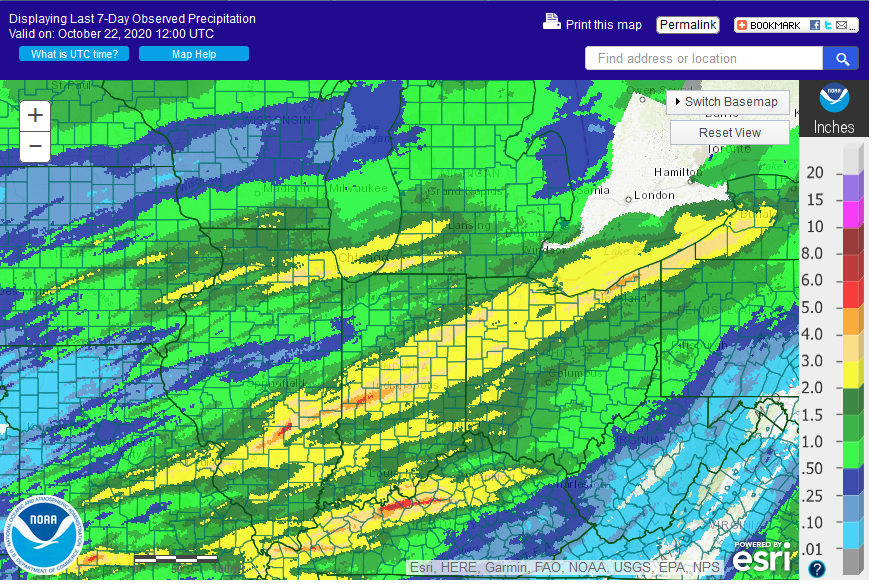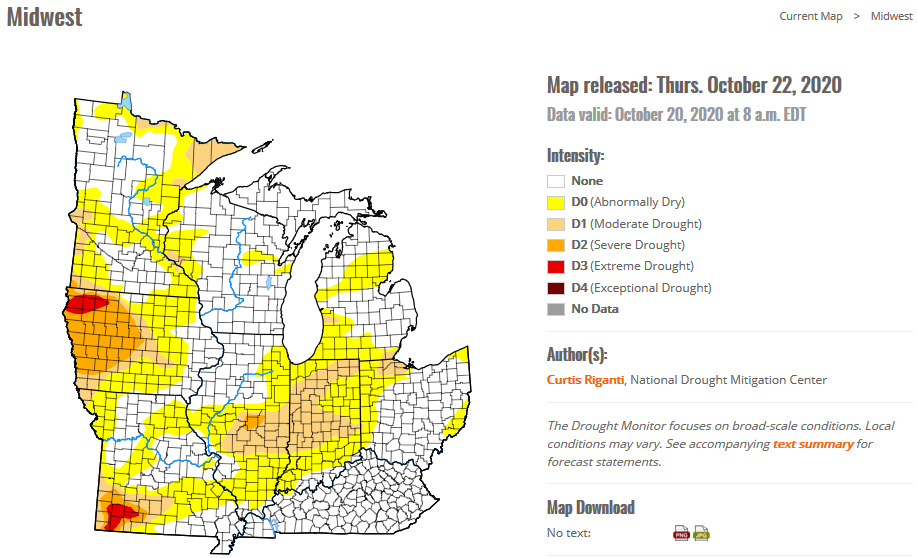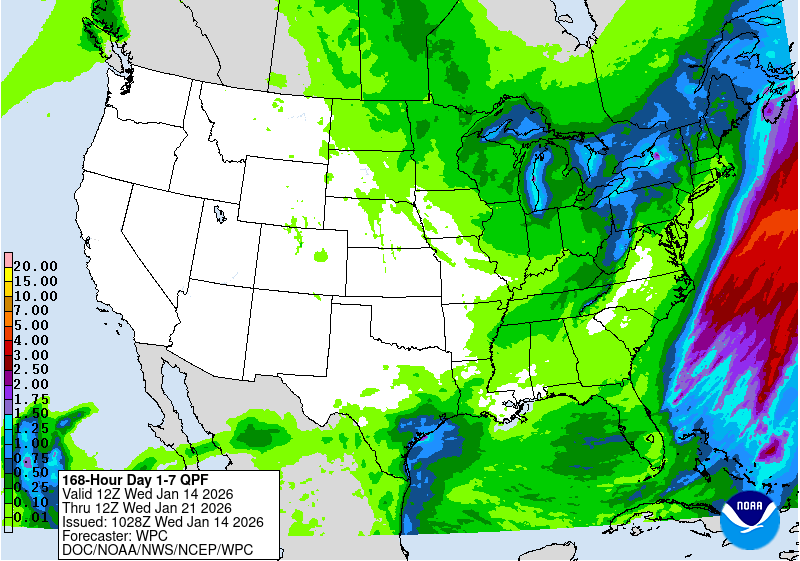A lot has changed in Ohio valley moisture conditions in the past week.
A week ago drought covered a large amount of the midwest. Much of Indiana was in moderate drought as well as parts of northwest and southwest Ohio:

Over the past 7 days a large swath of one to as much as 5 inches of rain moved across the Ohio valley and the midwest:


The new US Drought Monitor shows a significant decrease in drought extent and coverage. Much of the 7 day rainfall actually fell AFTER the recent drought monitor was compiled:

Much of Ohio had moved out of the dry category by the time the latest drought monitor was compiled on Tuesday and much of Indiana and Ohio that is still shown in drought had heavy rain and will likely be removed in the next drought monitor release.
More heavy rain is forecast in the next 7 days for the Ohio valley so I expect drought in the Ohio valley to be further eroded.
7 day Rainfall (melted snow) Forecast:

By Halloween, cold and wet weather will prevail and it is not impossible that Cincinnati could see its first snowflakes of the season, kind of like last year. But that is over a week away. We’ll see how it all plays out.









 >>>
>>>



